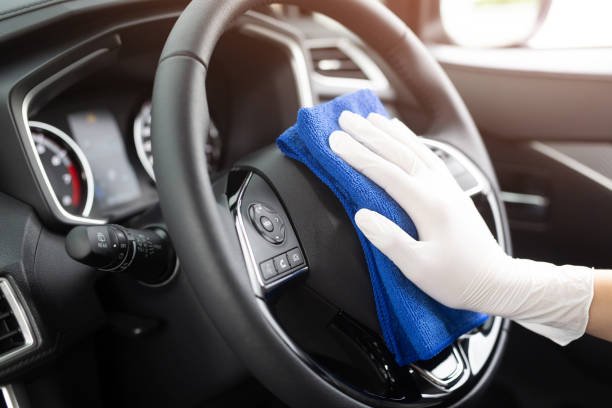Car Waxing: Protecting and Enhancing Your Vehicle’s Shine
Car waxing is an essential step in maintaining your vehicle’s appearance and protecting it from environmental damage. It not only enhances the shine of your car but also creates a protective barrier against UV rays, dirt, and minor scratches. In this guide, we’ll explore the benefits of best car waxing in Charlotte NC, the types of wax available, and a step-by-step process for achieving that showroom shine.
Why Waxing Your Car is Important
Waxing goes beyond just making your car look good. It acts as a protective layer, shielding the paint from contaminants and reducing the risk of corrosion. Here’s why regular waxing should be part of your car maintenance routine:
Protects against environmental damage
Enhances the car’s appearance
Prolongs the life of your paint
Reduces minor scratches and swirl marks
Types of Car Wax: Which is Best for You?
Choosing the right wax is crucial for optimal results. There are three main types:
Carnauba Wax: Known for a high-gloss finish but requires more frequent application.
Synthetic Wax: Longer-lasting protection but with a less natural shine.
Spray Wax: Convenient for quick applications but doesn’t offer long-term protection.
How to Properly Wax Your Car: A Step-by-Step Guide
Wash your car thoroughly to remove dirt and debris.
Dry the vehicle completely, ensuring no water spots remain.
Apply wax in small, circular motions using a soft cloth or applicator pad.
Allow the wax to dry to a haze.
Buff the surface with a clean, microfiber cloth to reveal the shine.
How Often Should You Wax Your Car?
The frequency of waxing depends on the type of wax used and environmental conditions. Typically, you should wax your car every 2-3 months. For synthetic waxes, this can be extended to 4-6 months, while carnauba wax may require more frequent applications.
Common Mistakes to Avoid When Waxing
Even though waxing seems simple, there are a few mistakes that can lead to poor results:
Applying wax on a dirty car: This can trap dirt and damage the paint.
Using too much wax: A thin, even layer is sufficient.
Waxing in direct sunlight: Heat causes wax to dry too quickly, making it difficult to buff out.
FAQs
Q1: Can I wax my car after every wash?
Yes, but it may not be necessary. Most waxes provide protection for several months, so reapplying every 2-3 months is often enough.
Q2: How long does it take to wax a car?
It generally takes about 30 minutes to an hour, depending on the size of the vehicle and the type of wax used.
Q3: Can waxing remove scratches from my car?
Waxing can help minimize the appearance of minor scratches, but it won’t remove deep scratches. For more serious damage, you’ll need a polish or paint correction.
Q4: Is waxing safe for all car paints?
Yes, waxing is generally safe for all car paints. However, always test on a small area first if you’re using a new product.
Q5: What’s the difference between polishing and waxing?
Polishing removes a thin layer of paint to smooth out imperfections, while waxing provides a protective layer over the paint. They are complementary but serve different purposes.
Conclusion
Car waxing is a simple yet highly effective way to maintain the aesthetic appeal and longevity of your vehicle. By choosing the right wax and following proper application techniques, you can keep your car looking brand new while protecting it from daily wear and tear.









